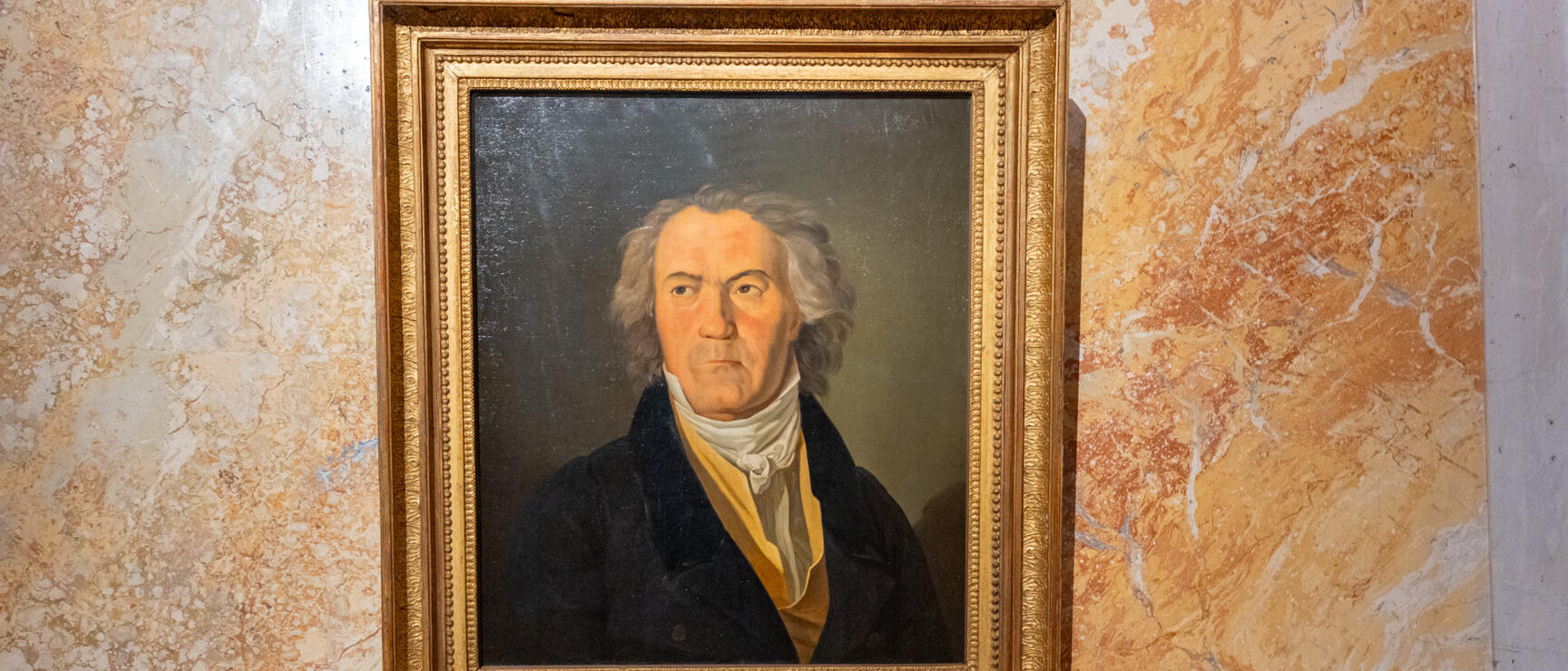
Ludwig van Beethoven
A life between rebellion, silence and genius
Born in Bonn, Germany, in 1770, Ludwig van Beethoven was considered the perfectionist of Viennese Classicism and a pioneer of Romanticism. In 1972, he moved to Vienna, where he lived until his death in 1827. His music transcended the dramatic upheavals of his time: the French Revolution, Napoleon, and the Restoration. Beethoven's Symphony No. 9 with “Ode to Joy” and No. 5 with its striking opening motif are now all part of the global cultural heritage.
That being said, Beethoven’s life was everything but easy. It was marked by contradictions – he was brilliant, stubborn, and often lonely. Deafened at an early age, he still kept composing. Beethoven wanted his music to "serve suffering humanity" – and created work that continues to deeply touch his audience.
Several houses and flats in which the artist spent part of his life are open to visitors today, providing insights into his life and work. Many other places—mainly in Vienna, but also in the Vienna Woods, Baden, and Krems—also commemorate Ludwig van Beethoven, Vienna’s world-famous resident.
Beethoven: Sights and spirit
Beethoven's house in central Vienna
The Pasqualatihaus
Ludwig van Beethoven found his inspiration and home in Vienna. Two of his residences can be visited today, with treasures from his life on public display.
One of them is the Pasqualati House in Vienna's city centre, at the corner of Mölkerbastei and Schreyvogelgasse. Beethoven lived here for almost eight years. The house's namesake, Johann Baptist Freiherr von Pasqualati, was an important patron of Beethoven. In this house, he found inspiration for his only opera, “Fidelio”. He also wrote the delicate melody of “Für Elise” here.
Beethoven's former flat is now part of the Vienna Museum. In five different rooms, you can learn more about the composer and gain insight into his works.
The composer's second house
Beethoven's happy place in the suburb
Probusgasse 6 is another location of the Vienna Museum: the Beethoven Museum. In Beethoven's time, this area in Vienna's 19th district was still a suburb, while today it’s well within the city borders. A sanatorium was located here, where the composer hoped to find a cure or at least relief from his increasing deafness.
Spreading across 250 m2, the Beethoven Museum invites visitors to delve into his life in six chapters: Arrival, recovery, composition, earnings, performance, and legacy. Each chapter introduces them to an aspect of the artist and a part of his former residence. In 1802, Beethoven wrote his "Heiligenstadt Testament" here, driven by the fear of impending deafness. However, he never sent these "final" lines to his brothers. He also completed his Symphony No. 3, the “Eroica”, here. Later, he worked on his greatest work, the Symphony No. 9.
Beethoven's homes you can visit
4 amazing musical facts about Ludwig van Beethoven
Beethoven's Vienna
Klimt's homage to Beethoven in the Secession
The golden dome of the Secession is visible from afar: The closer you get to the building, the more captivating this architectural icon of Art Nouveau becomes. "To each age its art. To art its freedom" is inscribed on the facade. Since its founding by Viennese Modern artists such as Gustav Klimt and Josef Hoffmann, the Secession has been known as a brilliant venue for art exhibitions.
The Beethoven Frieze is one of the highlights in this unique building. The 34 x 2 metre work of art was created by Gustav Klimt in 1902 as a tribute to Beethoven to mark his 75th death anniversary. It is inspired by Richard Wagner's interpretation of Beethoven's Symphony No. 9: humanity's search for happiness. The three-part frieze was originally intended just as a decorative painting for the anniversary exhibition. After several detours, it was moved to Belvedere palace and in 1986 permanently to the Secession.
Beethoven in Vienna's museums
Walks turned into musical pieces
Inspired by nature
Beethoven loved nature. He came up with many of his ideas during long walks through the forests surrounding Vienna. His Symphony No. 6, the "Pastoral," reflects this passion. In five parts, it depicts scenes such as the joy of being in the countryside, a babbling stream, or a thunderstorm. Beethoven saw this symphony not as a mere imitation, but as an expression of feelings evoked by nature.
His deep connection with nature was an important source of inspiration. Various hiking trails and walking paths still commemorate the artist today.